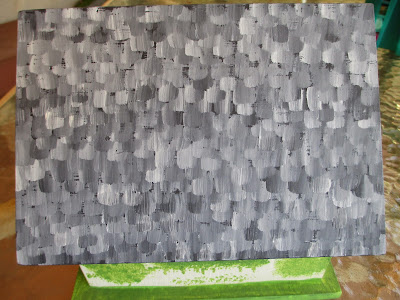My sweet husband gives such thoughtful gifts. For Mother's Day he gave to me this birdhouse and a box for saving seeds, both unpainted. We have no birdhouses in our garden, so this is a fun first. I may have been bitten by the bug. Painting it was such a joy, more birdhouses might just find their way to our home.
I am no professional artist, so I hesitate to act like I really know what I am doing regarding painting. I have taken no classes, just sort of jumped in and tried things, so I'll share the photos but won't go into detail about how to paint. There are lots of wonderful painting tutorials online done by people who really know proper technique. My technique goes sort of like this: Add a little here, add a little there...oops...don't like that part so wipe it off. Try again, etc. The wonderful thing about creating something for yourself is that it is art for the sake of enjoyment. I used acrylic paint, and various brushes and sponges.
As soon as I saw the birdhouse I knew I wanted to paint it to look like our home. Of course I took plenty of creative license and so it is loosely based on our house. After a light sanding with fine sandpaper,
I primed the whole thing with an exterior primer (including the bottom).
Next I painted the walls tan and the roof a deep charcoal gray.
I drew the door and windows using pencil.
The bottoms of the windows are to be covered by flowers so the lower edges are ragged.
Shutters aren't very even. Oh well. As my father would say, "It's good enough for the girls I go with." He's a character, that one.
The grass is done in layers, this is the first lightest green color. I painted the bottom of the birdhouse green too.
For the roof I started at the bottom and layered up toward the top.
Then the fun really begins, adding the garden! The green was added mostly using sponges.
 |
| That plant under the window box just seemed too heavy so I wiped it off with wet paper towel and painted over it with tan for a fresh start. |
Then the garden bloomed. I didn't take pics as I went but here are the finished sides.
As with many projects, I drew inspiration from things I found online. For ideas for this birdhouse I looked on Pinterest and found someone who sells them. She does a lovely job painting them in different color combinations. Click here for the link to her Etsy page.
Now I have to get started painting the seed box. Oh, the possiblilties!

















































